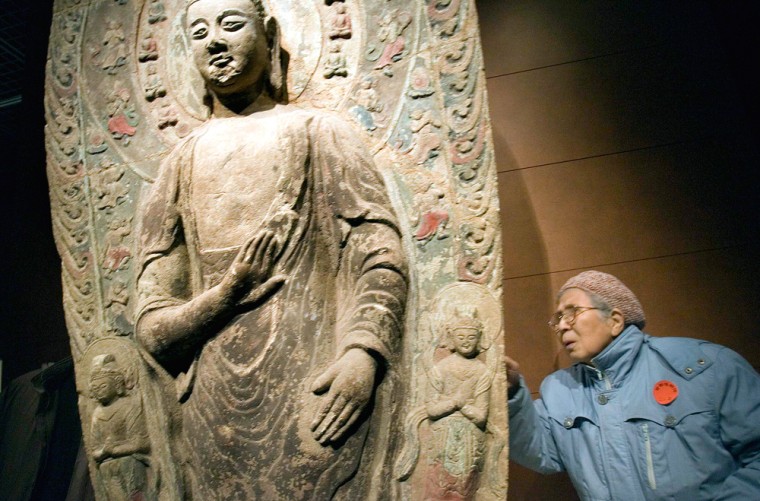Most cities would be happy to open a multimillion-dollar museum for art, history or science once a decade.
Beijing has just unveiled two.
The Beijing Capital Museum, in a sleek building with an airy foyer soaring five stories high, features exhibits that include a full-scale copy of one the city’s old residential lanes.
The Museum of Chinese Film, which visitors enter through a star-shaped front door, showcases a century of cinema history from China’s mainland, Hong Kong and other Chinese communities.
The pair are the products of a museum-building boom that the government says will open some 300 new institutions over the next decade, focusing on subjects from World War II to the life of communist founder Mao Zedong. Each of China’s 55 ethnic minorities is to get its own museum.
China “can afford to spend more resources remembering the past and meeting the cultural needs of the ordinary people,” said Sun Wuyi, a spokesman for the Capital Museum.
The new museums reflect the communist government’s desire to put its own stamp on history.
“What they have is a state monopoly view of history,” said Thomas Bartlett, a historian at Australia’s LaTrobe University. “They want one authoritative version that is accepted by all.”
Skipping sticky topicsThe museum mania is part of a quiet revolution that has swept over the lives of millions of urban Chinese since the introduction of capitalist-style economic reforms in 1979.
As China has gotten richer, authorities are trying to ensure that new facilities are available to celebrate historical and cultural milestones.
The strategy is reflected at the Capital Museum, which avoids sensitive political events by skipping the past five decades of communist rule.
Art displays in the museum, just west of Tiananmen Square in the heart of Beijing, include classical landscape paintings and leading examples of calligraphy.
Historical representations feature dozens of rooms and hundreds of exhibits ranging from Buddhist figures unearthed by archaeologists to a model of one of the city’s narrow “hutong” lanes.
“The purpose of the museum is to explain Beijing’s excellent history and culture and show them to the world,” said Peng Xin, a museum spokeswoman.
The history displays end with a film of the proclamation of the founding of the People’s Republic of China in 1949.
Conspicuously absent are seminal events such as the violent 1966-76 Cultural Revolution, the ultra-radical upheaval when thousands of people were killed and millions persecuted.
“The event is still too close to the present to have an official version,” said Bartlett. “No one knows yet how it is supposed to turn out.”
At the $67 million film museum, displays fill 21 exhibition halls and include fading posters for war movies and costumes used in early 20th century period dramas.
Special sections are reserved for the film industries of Hong Kong and Macao, recently returned to Chinese rule, and Taiwan, which split with the mainland amid civil war in 1949.
Taiwan’s inclusion reflects the communist government’s insistence on maintaining the image among China’s public that the self-ruled island is part of its territory and must unite with the mainland.
